The Hydrangea Temples of Kamakura in Full Bloom
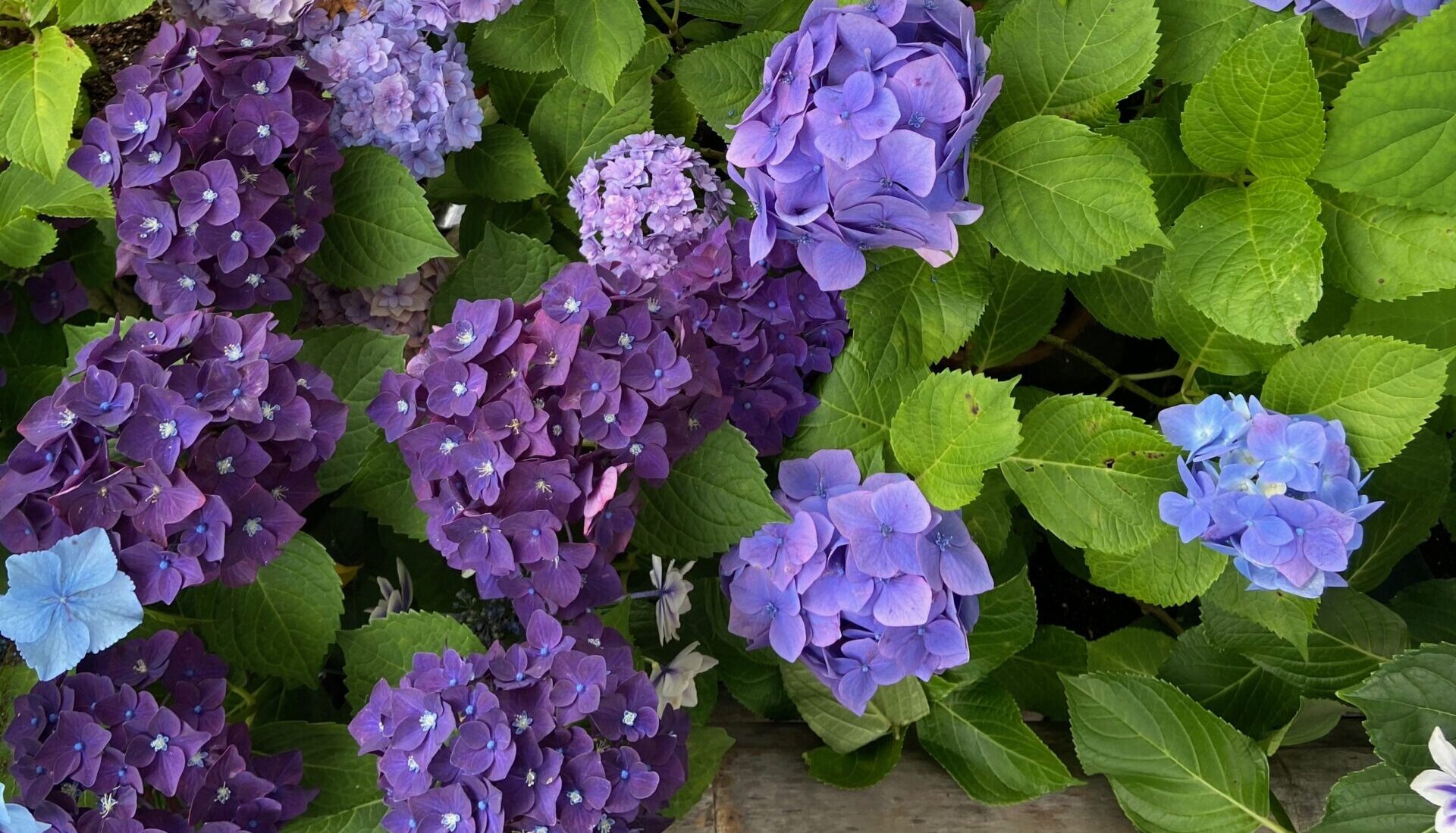
July 2022 Seasonal up date : 1
MEIGETSU-IN AND HASE-DERA TEMPLE
June in Kamakura is the season of hydrangeas. So, where should you go? It comes down to the ultimate choice between two options:
Should you take photos surrounded by blue hydrangeas at Meigetsu-in, or experience the diversity of varieties and be surrounded by colorful hydrangeas at Hase-dera Temple ?
Both are extremely popular and can get crowded, but why not visit one of these two spots?
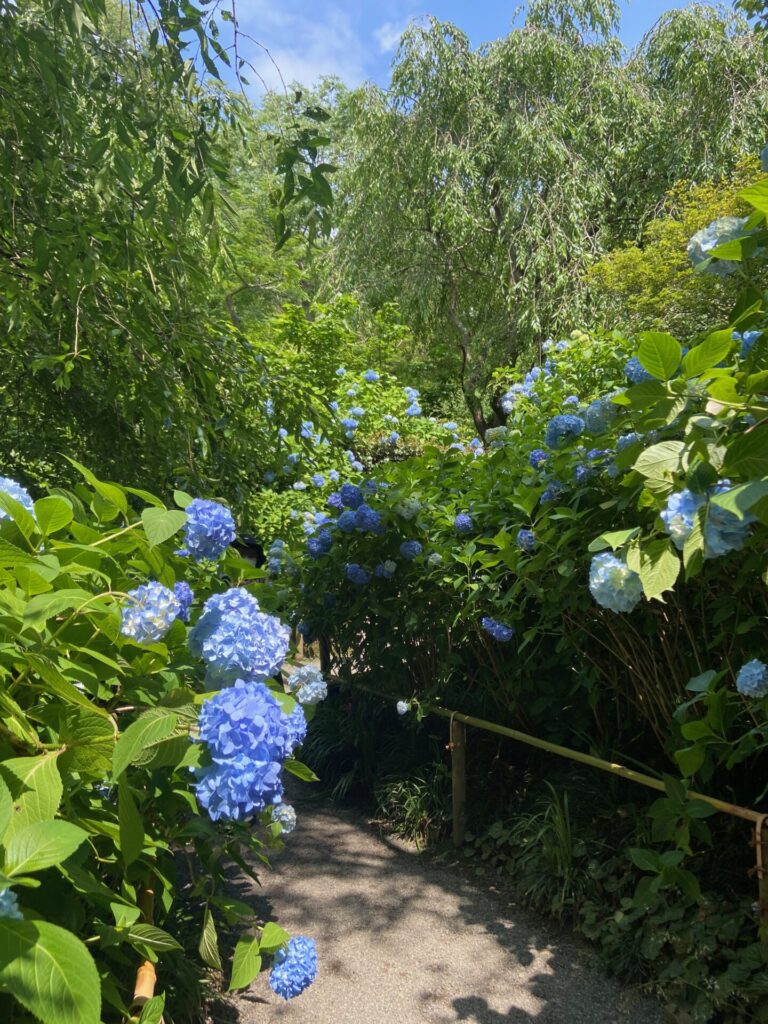
MEIGETSUIN
Variety: Blue Hime Hydrangea
From Kita-Kamakura Station, I passed along a small path by the railroad tracks, admiring the hydrangeas in the gardens of lovely nearby houses, and arrived at Meigetsu-in after about a ten-minute walk.
Since it was still early June and a weekday, I was able to pay the entrance fee without waiting and followed the guided route around the garden. It was a refreshing world where blue hydrangeas were in bloom. The hydrangeas in bloom are the famous “Meigetsu-in Blue” Hime Hydrangeas. The monochromatic scenery is photogenic, like a movie set.
A leisurely lap around the garden takes about 30 minutes. Luckily, it wasn’t too crowded that day, so I could take wide-angle photos without people in them. The atmosphere was peaceful, with many people taking photos at their own pace, strolling through the bamboo grove, and enjoying the serene surroundings.
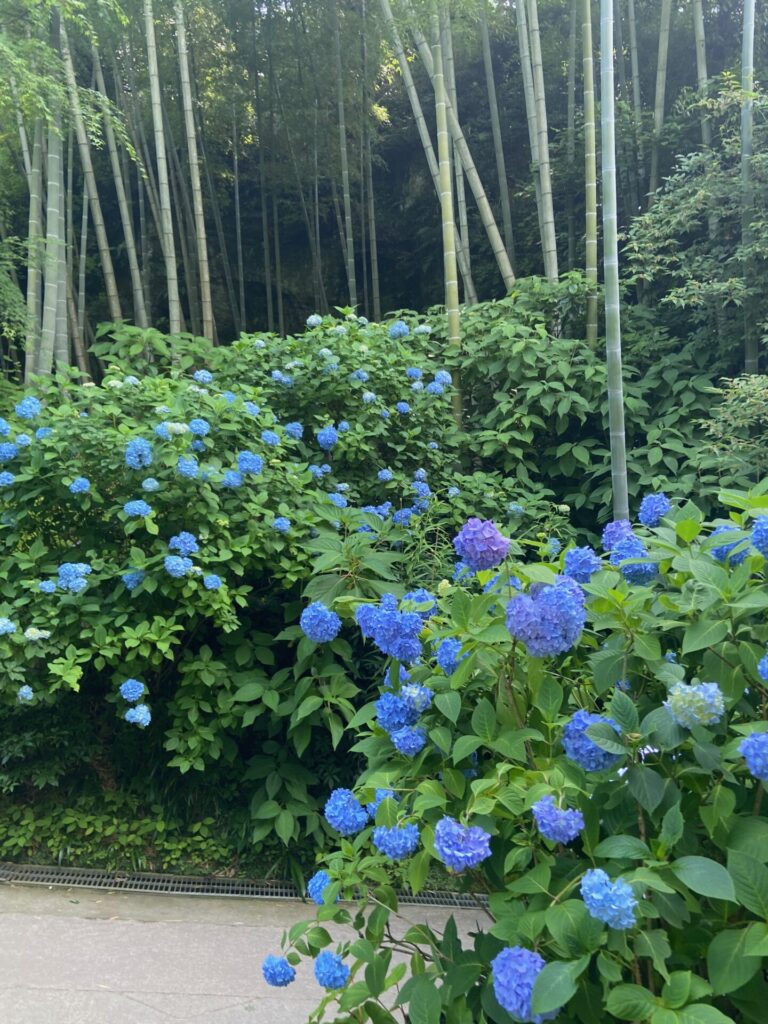

After completing a round of the garden, I enjoyed matcha at the temple’s teahouse, ‘Gesshoken’.
The seats inside the teahouse featured charming Showa retro decor, offering a cozy atmosphere. Meigetsu-in is associated with the moon (“getsumei” in Japanese), so the rabbit is its animal mascot. The matcha bowls subtly featured rabbit designs. There is even an area on the grounds where rabbits are kept.
Unsure where to sit, I opted for an outdoor seat covered with a red cloth (himo-sen). In front of me, I could faintly hear the refreshing sound of the suikinkutsu.
A suikinkutsu is a garden ornament that allows one to enjoy the small resonant sounds of dripping water.
I enjoyed a delightful tea time that was pleasing to the ear as well.
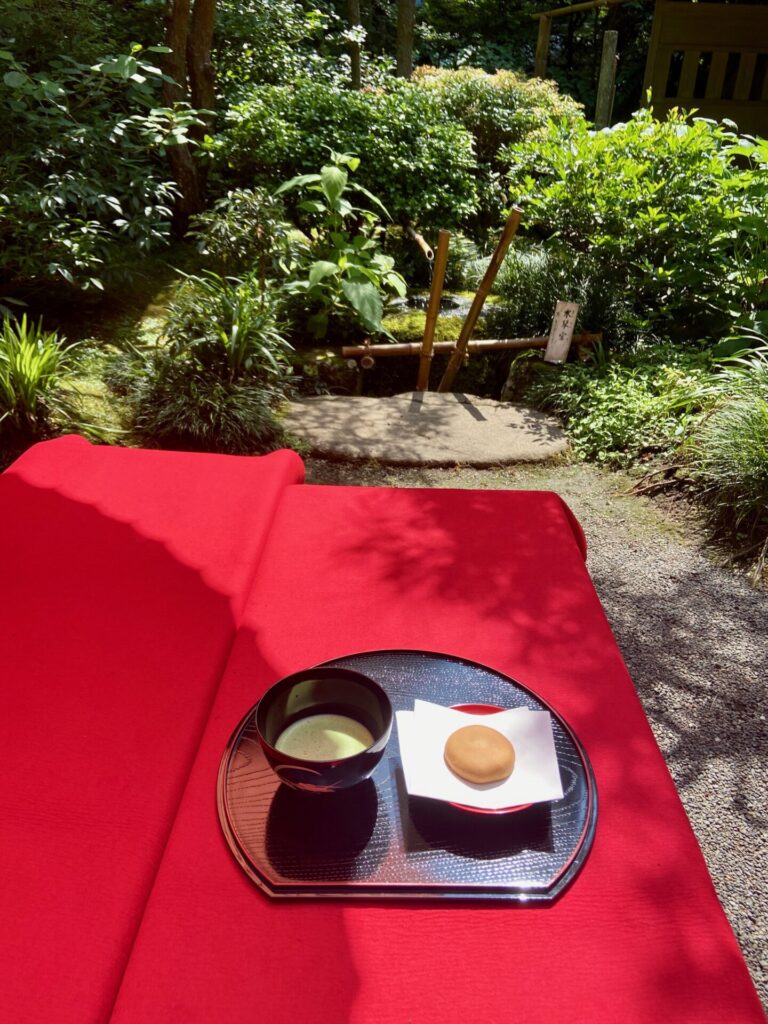
HASE-DERA Temple
There are over 2,500 hydrangea plants of more than 40 varieties.
In late June, I alighted from the crowded Enoden train at Hase Station and walked along the street lined with shops towards Hasedera Temple.
Along the way, there were souvenir shops selling traditional items like wooden swords and pennants, interspersed with trendy restaurants and cafes. Further down the winding path, there were also miscellaneous goods stores. The street from Hase Station to Hasedera Temple and Kotoku-in (home of the Great Buddha of Kamakura) is always bustling and enjoyable for anyone who visits.
Upon arriving at Hasedera Temple, renowned for its hydrangeas, it was bustling with people—crowds reminiscent of a theme park.
Despite the crowd, I paid the admission fee and entered the temple grounds.
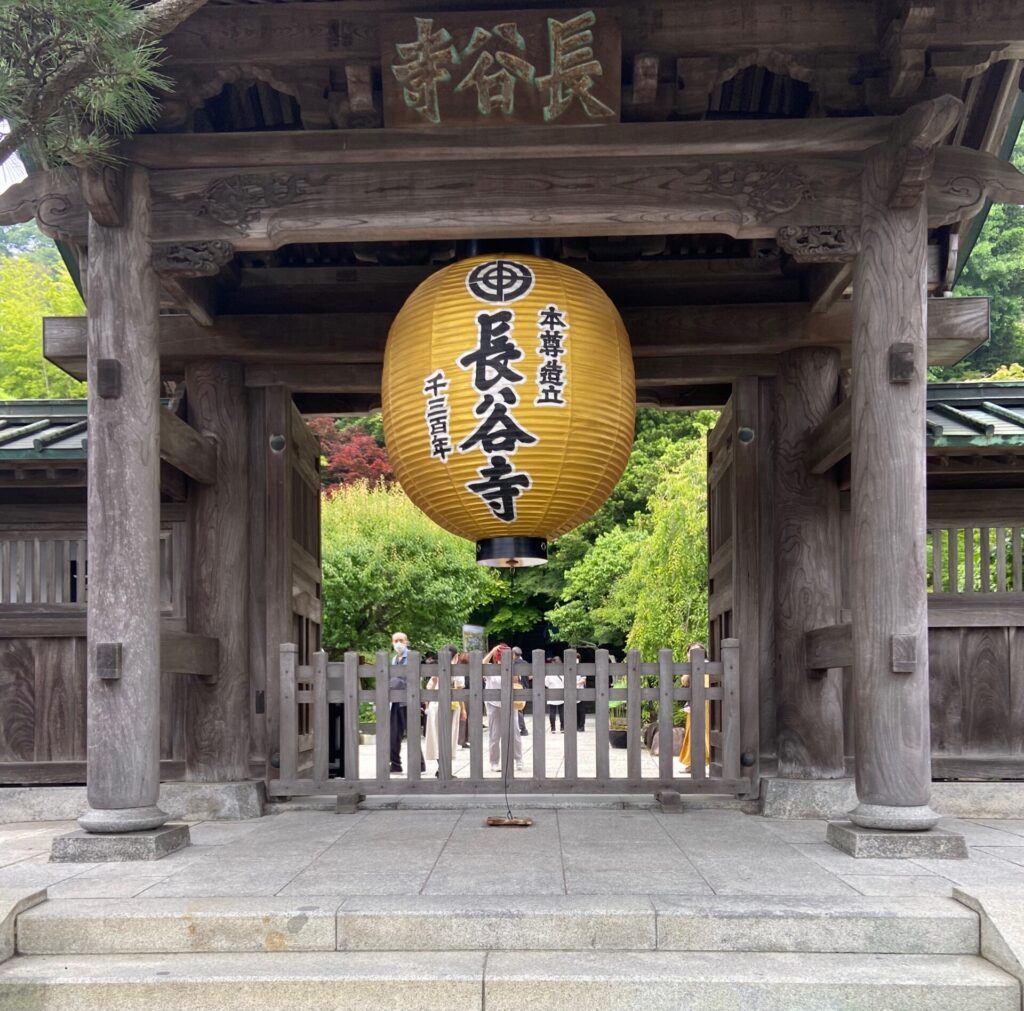
I paid the admission fee of 400 yen at the reception on the left-hand side.
Looking at the temple map, it seemed that the hydrangeas were blooming along the “Scenic Walking Path” deep within the temple grounds.
As I climbed the stairs towards the main hall, stopping by places like the “Nagomi Jizo” and the “Benten Hall,” I arrived to find a large number of people seated tightly on benches.
Recalling the people wandering around at the entrance, I finally realized that there was a wait due to the crowds.
After paying the fee to enter the hydrangea area in the main hall, I received a numbered tag. I was informed that my number would be called approximately an hour later, and since it was a weekday, the wait wasn’t too long.
Many people seemed content to admire the various hydrangea varieties planted outside the walking path while waiting.
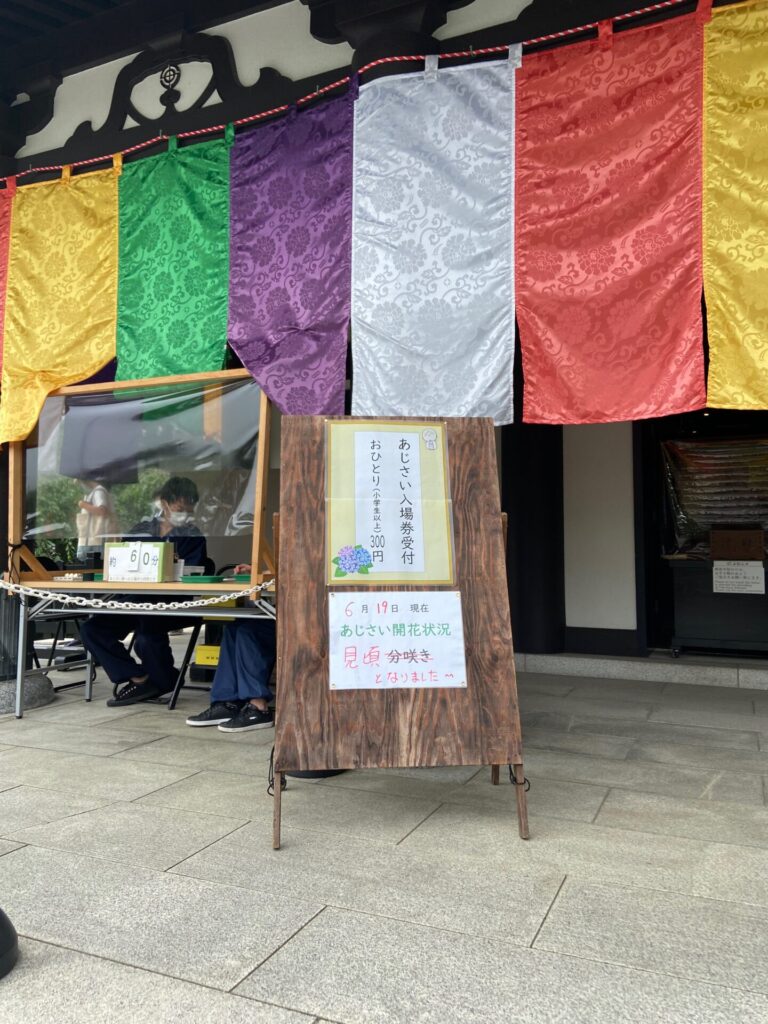

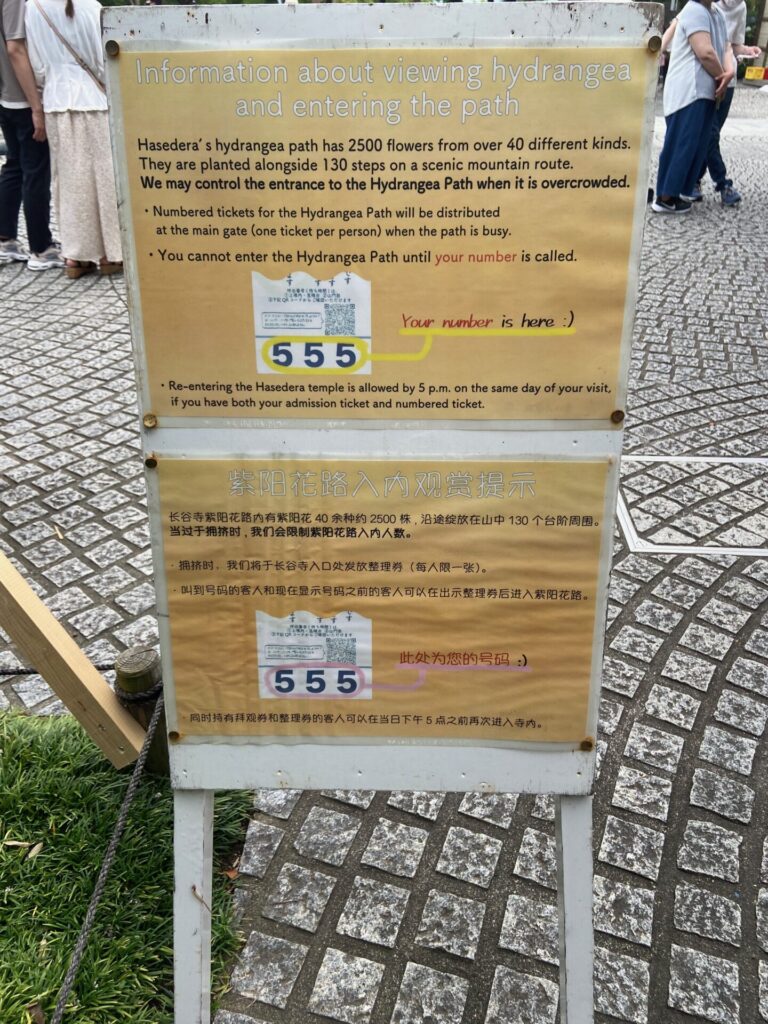
However, at Hasedera Temple, entry and exit on the same day are allowed, so it’s a good idea to first get your numbered tag at the main hall, then go outside to have a meal or take a stroll, and return around the time your number is likely to be called to see the hydrangeas.
On this particular day, the temperature was high, and the drinks from the vending machines within the temple grounds were sold out. There was a long line of people at ‘Kaikoan’, the restaurant with a great view, and the selection at the shop was limited to things like carbonated drinks, so bringing your own drinks is recommended. I decided to save having matcha at Kaikoan for another time.
While glancing wistfully at the menu board at Kaikoan, which had “Hydrangea Soda” written on it, I decided to temporarily leave the temple grounds.

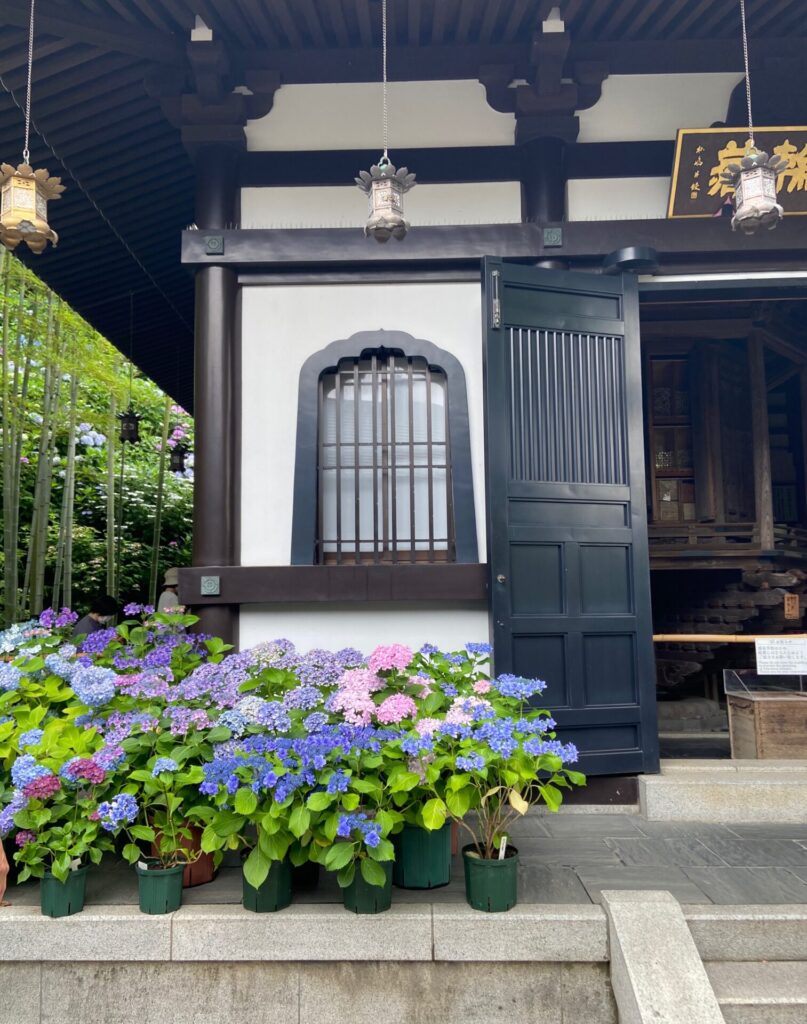
And an hour later, filled with anticipation, I headed to the hydrangea-lined walking path. The winding garden, utilizing the slope, exuded an excitement akin to an enjoyable hike due to its location.
Here, a variety of hydrangeas bloomed, creating a vibrant display. Pink, purple, eggplant, and sax blue hues delighted the eyes. The variations in size and arrangement of the lacecap hydrangeas were truly diverse, astonishing in their multitude of species.
Around me, I spotted young women wearing light-colored dresses, taking “Instagram-worthy” photos surrounded by hydrangeas. The picturesque setting, perfect for capturing a pastel-colored shot, was immensely popular among Instagrammers.


For those who find the crowds at Meigetsu-in and Hasedera Temple a bit overwhelming, I recommend visiting Enkaku-ji Temple in Kita-Kamakura or the Ichijo Ekan Sanso near Jomyoji Temple. For more details, please refer to “Kamakura A TO Z: Part 1 / 2023” and “PLEASE ENJOY MATCHA AT THE BAMBOO TEMPLE IN KAMAKURA.“
